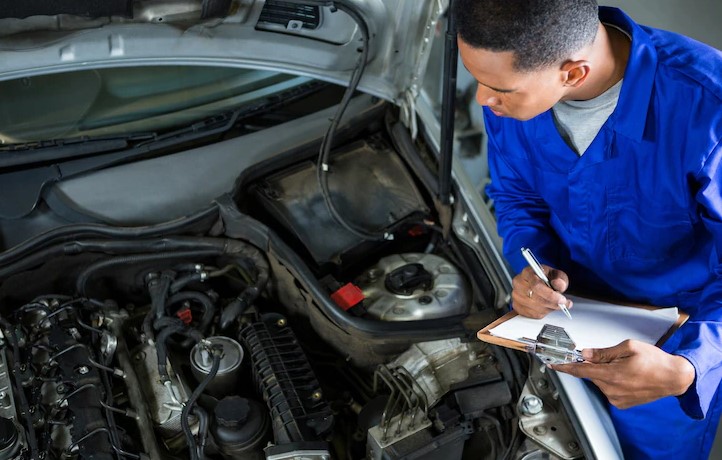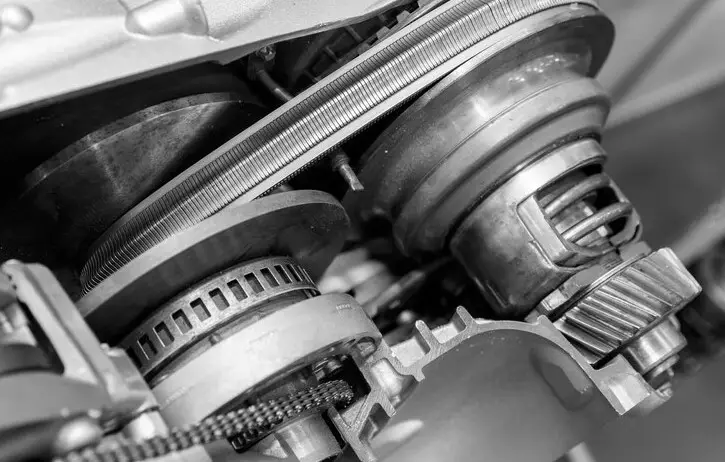Last Updated on February 16, 2023 by Leepu Da Maxim
IVT and CVT are transmission systems that enable the gear ratio between the engine and drive wheels to adjust the vehicle’s speed. While CVT is an acronym for continuously variable transmission, IVT stands for intelligent variable transmission.
Key Takeaways
- CVT works by changing through an unending range of gear ratios while driving, but IVT imitates the shift pattern of a manual transmission
- With IVT, you can change the gear ratio continuously, without any steps or shifts
- CVT uses a different mechanism to change the gear ratio where it uses a steel belt or chain to transfer power from the engine to the wheels
- Both IVTs and CVTs provide smooth acceleration but IVTs are generally more efficient than CVTs
History of CVT
Almost every automaker has at least one CVT model because of the widespread transmission. This transmission type had existed since 1490 when Leonardo DaVinci designed the first CVT; Benz and Daimler later patented it in 1886.
The continuously variable transmission became known in 1910 when Zenit motorcycles built one so efficient that it got banned from Hill-climbing competitions. Subaru brought CVT to the mainstream in the late 1980s and is popular to date.
History of IVT
IVT was designed by the Hyundai Motor group under Hyundai Transys. This technology uses the high-efficiency CVT as its foundation and improves it by amending responsiveness and gear-shifting feel.
With IVT, there’s a solution for conventional CVT belts and pulleys that slip against each other. The IVT technology is an advanced automatic transmission that keeps the engine in the optimum power band, delivering good performance and enhanced fuel economy.
Difference between How CVT works Vs. IVT

Before we get to the differences, let’s first understand how they work; remember that both are automatic transmissions.
How Does CVT Work?
Unlike conventional transmissions that use various intricate parts to switch gears, most CVT systems work through a pulley system with cones connected via a chain belt. These cones move to increase or decrease the belt diameter, thus changing gear ratios. This allows quick shifting into the required ratio to boost fuel economy and increase power.
On the CVT, one pulley is connected to the engine, and the other directs power to the wheels. The width of the pulleys varies depending on the needed power; as one gets smaller, the other gets larger. CVTs are popular now because they give the most power out of a small engine, thus making acceleration quicker and more responsive, making the driving experience better.
How Does IVT Work?
The Intelligent Variable transmission works similarly to a CVT by performing continuous shifts that provide superior efficiency over automatic transmissions. IVT modifies the pressure of the pulley system in the transmission based on the driving conditions and driver input.
The pulley system in the IVT has a wide ratio that correlates to a broader operation ratio than other similar transmission systems. This wide ratio improves performance at low gear ratios and increased fuel efficiency at higher gear ratios.
IVT also uses a shift control strategy technology that lines up driver input, vehicle acceleration, and behavior. This makes the transmission more responsive, thus delivering a better driving experience.
Difference between CVT and IVT
| CVT | IVT |
| Changes gear ratios by increasing and decreasing the diameter of the chain belt | Changes gear ratios by modifying the pressure of the pulley system in the transmission |
| Keeps the engine RPM fixed as the vehicle speed increases | Replicates a manual transmission shifting pattern while considering the driving conditions and drivers intention |
| Has preset gear speeds | Generates virtual gear speeds as needed |
| It has smooth driving, but drivers can feel gears shifting | It offers a smooth driving experience |
| Some CVTs utilize a push belt | IVT uses a chain belt |
Pros and Cons of CVT and IVT Transmissions

CVT and IVT have many benefits for drivers, but each has disadvantages. Let’s look at either transmission’s good, bad, and ugly to help you make an informed decision.
Pros of CVT Transmission
- CVTs have been proven to improve fuel efficiency significantly. Gas and hybrid models use this transmission type to give better mpg.
- According to Certified Transmission repair, driving uphill with a CVT is easier because it finds the needed gear ratio immediately, thus allowing the engine to provide power without hard shifting.
- CVT allows drivers to enjoy smooth driving and acceleration regardless of the speed because there aren’t any hard gear shifts
Cons of the CVT transmission
- CVT systems are more costly than conventional transmission systems
- CVT systems don’t last as long as other transmissions; most fail at around 100,000 miles
- They aren’t designed to handle the increased horsepower and different high-performance situations
Pros of IVT Transmissions
- IVTs improve performance and increase fuel efficiency
- It feels more responsive since it recreates a manual transmissions shift pattern
- It uses a chain belt instead of the conventional metallic belt, preventing slippage while improving efficiency.
- It has a longer lifespan and doesn’t require maintenance making it more reliable.
- Reduces engine power loss and improves fuel economy
Cons of IVT Transmissions
- The short lifespan of 100,000 miles or less.
- The initial cost of IVT is significantly higher.
What are the Common Problems with IVT Transmission?
- Unresponsiveness
- Burning smell that is mainly caused by overheating
- Loud and unusual noises
- Hesitation and Jerking
What Should You Look for When Buying a Used Car with CVT Transmission?

CVTs are costly; therefore, you must conduct thorough research before buying a used car with this transmission. Ensure you check its warranty, take a test drive, and conduct an inspection.
These are some of the things you should look out for, especially during the test drive:
- Strange and loud whining and humming sounds: CVTs are generally noisier than other transmissions, but they shouldn’t produce loud and unusual sounds. If you notice excessive sounds such as whining and humming when accelerating, the CVT could be faulty, and that’s a huge red flag right there.
- Slow shifting: for a CVT, you only have to shift between drive, reverse, and park. If it takes over 2 seconds for the transmission to shift, this could indicate that the CVT is faulty and should be changed soon.
- The CVT is faulty if you notice the acceleration slipping or losing power momentarily.
- Inconsistent RPM while driving at a steady speed indicates that the CVT could be faulty.
- Dirty transmission fluid could also indicate CVT issues and other problems.
- Shifting that jerks the vehicle is also a red flag
Frequently asked questions
Is IVT Better Than CVT?
IVT is an improvement in how the CVT works, so it is safe to say that it is better and more advanced. However, each transmission type has unique advantages and a fair share of problems. IVT is also more costly compared to CVT
Is IVT Transmission Automatic or Manual?
IVT transmission is automatic but mimics a manual transmission shifting pattern to give a smooth driving experience. IVT changes gear ratios faster than the standard automatic transmission, thus allowing power to get to the wheels more quickly.
Are IVT Transmissions Reliable?
Yes, IVT transmissions are more reliable than manual and regular CVT transmissions, which is why most automakers embrace this technology. IVTs offer unlimited gear ratios and speed and provide better performance.
IVT vs. CVT: Final Word
IVT and CVT transmissions are designed to give the driver a better driving experience while boosting performance and fuel efficiency. These types of transmission offer better performance, especially for small engines. The transmissions come with high prices for purchasing and repair costs, so ensure a warranty covers them. Overall, both transmissions are reliable and give a better driving experience than traditional automatic transmissions.
Reference 1: Hyundai’s IVT is More Efficient and Responsive Than a CVT (dsf.my)
Reference 2: IVT/CVT Transmission || Pros and Cons Explained || Ft. Kia Seltos IVT Transmission || Motor Hub

Hi, I’m Leepu Da Maxim , a dedicated car enthusiast with over 10 years of experience in this field, and I’m thrilled to share my passion and expertise with fellow car enthusiasts like you. My journey began in my hometown West Jordan, Utah, where my fascination with the mechanics and design of cars sparked at a young age. Over the years, this passion has evolved into a commitment to providing accurate, insightful, and engaging information about all things automotive through CarsAmazing .

